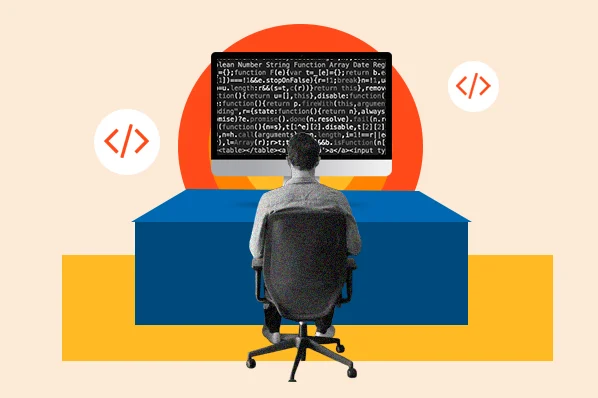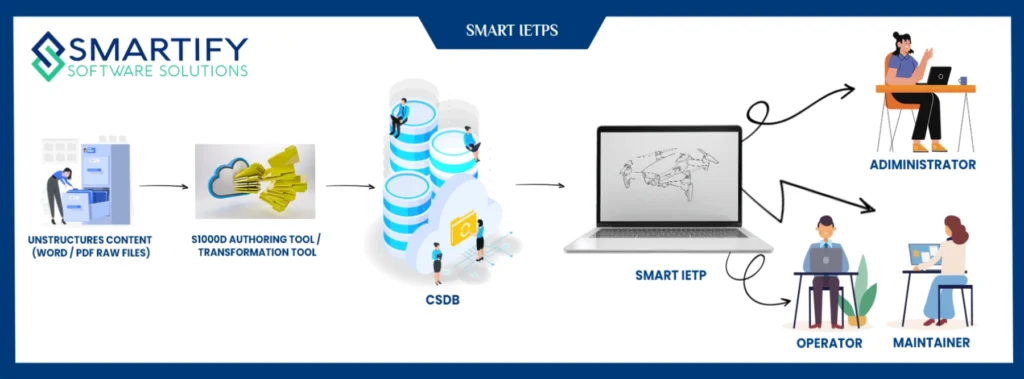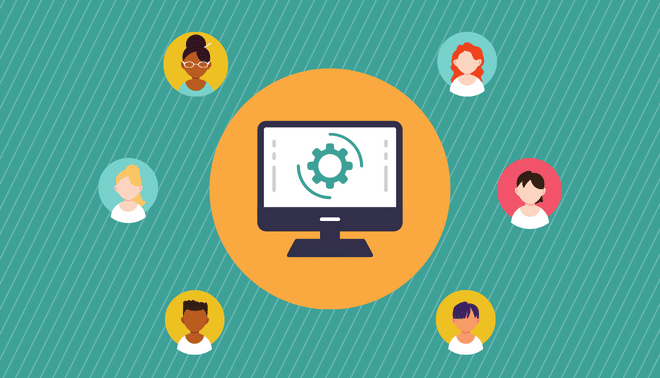How Do They Decode Software Data? A Beginner’s Guide
Have you ever wondered what happens inside your computer when you run an application? Software speaks a language of its own, a complex mix of code and data that is completely unreadable to most of us. It’s like a secret code that only the machine understands. So, how do programmers and analysts break this code? This guide will pull back the curtain on the fascinating process of decoding software data. We’ll explore the tools, techniques, and the critical thinking involved in turning digital gibberish into meaningful information.
Whether you’re a budding programmer, a tech enthusiast, or just curious about the digital world, understanding this process is key. We will cover everything from the basic building blocks of software data to the advanced methods used by professionals. By the end, you’ll have a clear picture of how they decode software data and why it’s such a vital skill in technology.
Key Takeaways
- Decoding is Translating: Decoding software data is the process of converting machine-readable data into a human-readable format.
- Multiple Formats Exist: Data comes in many forms, including binary, hexadecimal, JSON, and XML, each requiring different approaches.
- Specialized Tools are Essential: Professionals use tools like debuggers, hex editors, and parsers to analyze and interpret data.
- Methods Vary: Techniques range from simple log analysis to complex reverse engineering.
- Ethics Matter: Decoding data must be done legally and ethically, respecting privacy and intellectual property.
- Challenges are Common: Encryption, compression, and obfuscation are common hurdles that make decoding more difficult.
What Does It Mean to Decode Software Data?
At its core, decoding software data is a process of translation. Computers communicate and store information using binary code—long strings of ones and zeros. While this is efficient for machines, it’s impossible for humans to read directly. Decoding is the act of taking this raw, machine-level data and converting it into a format we can understand and work with. This could mean turning binary into text, numbers, or structured information that reveals how a program operates, what data it’s processing, or where an error might be occurring. The central question of how do they decode software data is answered by this translation process. It’s not about hacking in a malicious sense; rather, it’s about understanding, debugging, and ensuring software works correctly. Professionals do this to fix bugs, check for security vulnerabilities, or make different software systems compatible with one another.
Common Software Data Formats
Software data isn’t a one-size-fits-all concept. It comes in various formats, each with its own structure and purpose. Understanding these formats is the first step in knowing how to approach decoding.
Binary and Hexadecimal
The most fundamental format is binary, the language of 1s and 0s. Every piece of software data ultimately breaks down to this. However, reading long streams of binary is impractical. That’s where hexadecimal (or “hex”) comes in. Hexadecimal is a base-16 number system that uses digits 0-9 and letters A-F. It’s a more compact and human-friendly way to represent binary data. For example, a single hex character can represent four binary digits. Analysts often use hex editors to view and manipulate the raw data of a file, looking for patterns or specific values that correspond to known data structures.
JSON and XML
For web and modern applications, data is often structured in more readable formats like JSON (JavaScript Object Notation) and XML (eXtensible Markup Language).
- JSON uses key-value pairs (e.g.,
"name": "John") and is lightweight, making it extremely popular for APIs that let different web services talk to each other. - XML uses tags to define elements (e.g.,
<name>John</name>). It’s more verbose than JSON but is very flexible and widely used in enterprise systems and configuration files.
Decoding these formats is often simpler because they are designed to be somewhat human-readable from the start.
Tools of the Trade: What Do They Use?
You can’t decode complex software data with just your eyes. Professionals rely on a powerful toolkit to help them analyze and interpret the information. These tools range from simple text editors to highly specialized debuggers. A crucial part of knowing how do they decode software data is knowing which tool to use for the job. For instance, a simple text editor might be enough to read a JSON file, but you would need a hex editor to inspect the binary contents of an executable file. Debuggers are even more powerful; they allow a programmer to run a program line by line, pause its execution, and inspect the values of variables and memory at any given moment. This “live” view is invaluable for finding the root cause of a bug or understanding complex program logic. Other tools include network protocol analyzers, which capture and display data being sent over a network, and parsers, which are scripts or programs written to automatically extract specific information from structured or unstructured data.
Answering: How Do They Decode Software Data with Key Methods?

With the right tools in hand, experts apply several methods to decode software data. The chosen method depends on the goal, whether it’s debugging, interoperability, or security analysis. One of the most common methods is log file analysis. Applications often generate logs—text files that record events, errors, and user actions. By reading these logs, developers can trace a program’s behavior and pinpoint exactly where something went wrong. This is often the first step in any debugging process.
Another key method is protocol analysis. This involves capturing and examining the data packets that applications send over a network, like the internet. Tools like Wireshark can decode these packets, revealing the content of the communication. This is essential for developing software that needs to communicate with other services or for identifying security flaws in network communication. The answer to how do they decode software data often lies in using these systematic approaches to transform raw data into actionable insights.
A Glimpse into Reverse Engineering
Reverse engineering is a more advanced set of techniques used to understand a program’s inner workings when the source code is not available. This is like taking apart a watch to see how it ticks without having the original blueprints. Two key techniques in reverse engineering are using decompilers and disassemblers. A disassembler translates the machine code (binary) into assembly language, which is a low-level but human-readable programming language. An analyst can then read the assembly code to understand the program’s logic. A decompiler attempts to go one step further, trying to recreate the original high-level source code (like C++ or Java) from the machine code. While the result is never perfect, it can provide invaluable clues about the software’s functionality, algorithms, and data structures. This is a complex field that requires deep knowledge of computer architecture and programming.
Practical Steps for a Beginner
If you’re interested in learning how do they decode software data on a practical level, you can start with some simple steps. First, pick a simple data format to explore. A great place to start is with JSON. Many websites have public APIs that return data in JSON format. You can use your web browser’s developer tools to inspect the network traffic and see this data firsthand. Next, try opening a non-text file, like a simple image (JPEG or PNG), in a hex editor. You won’t “read” it like a book, but you can start to see patterns. For example, you can look up the file signature for a JPEG (which starts with FF D8 FF) and try to find it at the very beginning of the file. This simple exercise helps build an intuitive understanding of how files are structured at a binary level. As you get more comfortable, you can move on to analyzing simple log files from an application or game you use.
Challenges in Decoding Software Data
The process of decoding software data is not always straightforward. Developers and security experts often face significant roadblocks designed to prevent analysis. One of the biggest challenges is encryption. When data is encrypted, it is mathematically scrambled using a secret key, making it unreadable without that key. This is essential for protecting sensitive information like passwords and financial data. Another common hurdle is compression. Data is often compressed to save space and reduce network transmission time. Before this data can be analyzed, it must first be decompressed using the correct algorithm. Finally, some software developers use obfuscation, a technique used to deliberately make code difficult for humans to understand. This is done to protect intellectual property or hide malicious behavior. Overcoming these challenges requires advanced skills, specialized tools, and a lot of persistence.

|
Challenge |
Description |
Common Use Case |
|---|---|---|
|
Encryption |
Scrambling data with a secret key. |
Protecting passwords, financial data. |
|
Compression |
Reducing the size of data. |
Saving disk space, faster downloads. |
|
Obfuscation |
Making code intentionally hard to read. |
Protecting intellectual property. |
Ethics and Legal Considerations
When discussing how do they decode software data, it is crucial to address the ethical and legal boundaries. The ability to analyze software data is a powerful one, and it comes with responsibilities. In most cases, it is perfectly legal and ethical to decode data from software you own for purposes like debugging or ensuring it works with other programs (interoperability). However, reverse engineering software to crack it, steal intellectual property, or bypass security measures is illegal and unethical. The Digital Millennium Copyright Act (DMCA) in the United States has specific rules about circumventing copyright protection systems. Furthermore, analyzing data that contains personal or private information is governed by privacy laws like GDPR and CCPA. Always ensure you have the legal right to access and analyze the data, and always treat personal information with the utmost care. For more on related topics, you could explore insightful articles on sites like https://versaillesblog.com/.
Best Practices for Decoding
To decode data effectively and responsibly, professionals follow a set of best practices. First and foremost, always have a clear goal. Know what you are trying to achieve before you start, whether it’s finding a bug, understanding a feature, or testing security. This focus prevents you from getting lost in a sea of data. Second, work in a controlled environment. Use virtual machines or isolated systems to analyze software, especially if you’re unsure of its origin or purpose. This prevents any potentially malicious code from affecting your main computer. Third, document everything. Take detailed notes of your steps, observations, and findings. This documentation is invaluable for retracing your steps and sharing your results with others. Finally, stay curious and be patient. Decoding can be like solving a puzzle. It often requires trying different approaches and learning from failures until you find the solution.
Conclusion
Understanding how do they decode software data demystifies a core aspect of modern technology. It’s a process of translation, moving from the machine’s language of ones and zeros to human-readable information that allows us to build, fix, and secure the software that powers our world. We’ve seen that it involves recognizing different data formats like binary and JSON, using specialized tools like hex editors and debuggers, and applying methodical approaches from log analysis to reverse engineering. While challenges like encryption and obfuscation exist, a systematic and ethical approach can unlock the secrets held within software data. For anyone looking to dive deeper into technology, learning the fundamentals of data decoding is a valuable and empowering step.
Frequently Asked Questions (FAQ)
1. Is decoding software data the same as hacking?
No, not necessarily. While hacking can involve decoding data, the term “decoding” itself is neutral. Professionals decode data for many legitimate reasons, such as debugging software they’ve written, ensuring compatibility between systems, and conducting security audits. The intent behind the action is what defines it as ethical or malicious.
2. Can I get in legal trouble for decoding software data?
It depends on what you are decoding and why. Decoding your own software or publicly available data is generally fine. However, reverse engineering proprietary software to bypass licenses (cracking) or steal trade secrets is illegal. Always be aware of the terms of service and laws like the DMCA.
3. What is the easiest data format for a beginner to start with?
JSON is an excellent starting point. It’s text-based, human-readable, and widely used in web APIs. You can easily find public APIs that provide JSON data and practice reading and parsing it with simple scripts or even just your web browser’s developer tools.
4. Do I need to be a programmer to decode data?
While a programming background is extremely helpful, especially for complex tasks, it’s not strictly necessary to get started. You can begin learning by using tools with graphical interfaces, such as hex editors and network analyzers like Wireshark. This can help you build foundational knowledge before diving into code.
5. How is decoding used in video games?
In video games, data is decoded for many reasons. Modders decode game files to create new content, like characters or levels. Developers decode data during debugging to fix glitches. Data files might contain information about game maps, character stats, or saved game progress, and decoding them is key to understanding and modifying the game.
6. What’s the difference between a decompiler and a disassembler?
A disassembler converts low-level machine code into assembly language, which is a very direct, human-readable representation of the machine’s instructions. A decompiler tries to take this a step further by converting the machine code or assembly back into a high-level language like C++ or Java. Decompilation is much more complex and the result is an approximation of the original source code.














Post Comment